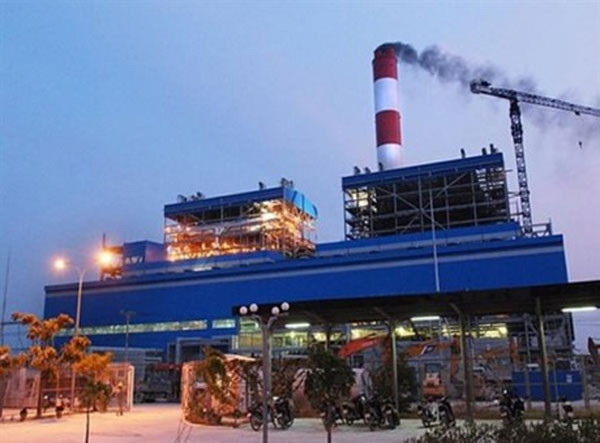 As Vietnam develops its thermal power plant system to meet increasing energy demands, the country faces a new environmental risk arising from the waste generated by those plants. (Photo: baohaiquan.vn)
As Vietnam develops its thermal power plant system to meet increasing energy demands, the country faces a new environmental risk arising from the waste generated by those plants. (Photo: baohaiquan.vn)Hanoi (VNA) - As Vietnam develops its thermal power plant system to meetincreasing energy demands, the country faces a new environmental risk arisingfrom the waste generated by those plants.
Burningcoal for power results in the production of a variety of solid waste, includingcoal ash (fly ash and bottom ash) and boiler slag. Under Vietnam’sregulations, boiler slag is defined as unharmful solid waste, but fly ash islisted as “possibly harmful waste”.
Officialfigures show the 21 thermal power plants across the country generate about 15.8million tonnes of coal ash and boiler slag, of which only about 5 milliontonnes are treated. Without a systematic waste treatment plan, many plantswill soon run out of space to store them.
MongDuong 1 thermal power plant in northeastern Quang Ninh province went intooperation at the end of 2015 but is running the risk of closure due to thisproblem.
The1,080MW-capacity plant consumes about 3 million tonnes of coal a year andreleases 1 million cubic metres of coal ash and boiler slag. Its dumping groundhas a storage capacity of 1.25 million cu.m, of which up to 1.8 million havebeen used. According to EVN GENCO 3, the plant investor, the storage capacitywill run out in eight months.
Thermalpower plants in the southern province of Tra Vinh are facing the same fate.
DuyenHai Power Centre, comprising four power plants, has dumping grounds of 100hectares. Nguyen Trung Hoang, vice chairman of the provincial People’sCommittee, said the likelihood of it being filled up may happen soon as “theamount of ash and boiler slag are huge”.
Meanwhile,the dumping ground of Cam Pha Thermal Power Plant, also located in Quang Ninh province,is already overflowing, the plant’s deputy director Nguyen Dinh Tuan told theThanh Nien (Young people) newspaper.
Thecompany had contracts with two enterprises to sell boiler slag as materials toproduce cement, but the amount was too small for that purpose.
TranVan Luong, head of the Industrial Safety Techniques and Environment Agency,admitted that the by-products of coal burning to generate electricity pose achallenge to the environment.
Vietnamwill have 12 additional thermal power plants by 2020, which are predicted togenerate about 22.6 million tonnes of coal ash and boiler slag each year.
Luongsaid that a way out of the problem is making use of the waste to producebuilding materials.
Accordingto Associate Professor Truong Duy Nghia, chairman of Thermo Scientific andTechnical Society, coal ash and boiler slag are mainly comprised of metal oxidesuitable for producing building materials. “When coal ash and boiler slagare used to produce building materials, the environmental problem is solved,”he said.
Infact, a couple of plants have already done so and attained good result.
HaiPhong Thermal Power Company in the coastal city of Hai Phong has been able tosell a majority of its production residues to companies producing cement andnon-fire bricks.
Thisis why its dumping ground with a capacity to hold 9 million tonnes of waste isnever overloaded, said Nguyen Thuong Quang, the company’s director.
“Usingcoal ash and boiler slag as materials help produce good quality cement andincrease profits. In fact, people have made used of this waste to producecement and non-fire bricks for a long time,” Quang said.
Althoughthe selling price of the waste is not high, only about 10,000-20,000 VND perkilogramme, Quang said the importance was it solved the problem of wasteoverload.
CompanyChairman Tran Van Nam said coal ash and boiler slag should be seen as potentialmaterials, instead of toxic substances.
However,he admitted there were obstacles hindering other power plants from doing whathis company was doing, especially in the country’s southern area.
“Unlikein the north, cement and brick producing plants in the south are often far awayfrom thermal power plants. As a result, the consumption of coal ash and boilerslag faces difficulties due to high transportation cost,” he said.
Namsuggested that the State should plan cement and brick producing plantssurrounding thermal power plants, in addition to policies to support technologydevelopment relating to this issue and tax incentives for the companiesinvolved.
Accordingto Luong from the Industrial Safety Techniques and Environment Agency, thereare still other problems, including the lack of national technicalregulations on coal ash and boiler slag use for building materials.
Ata recent seminar on developing thermal power, a representative of the Ministryof Construction said the ministry is compiling such a document and expects toissue it by early next year, in hopes of overcoming the obstacle.-VNA




























